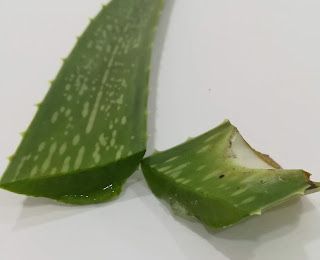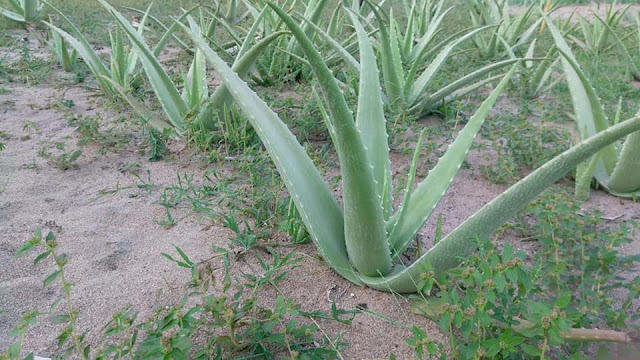Aloe Vera Harvesting
It can take six to eight months for the first
harvesting and after that the plants can be harvested further in two months regular intervals. Only mature sticks/bats should be harvested. you can harvest 4
to 6 bats from healthy mature bush. When harvesting the bats, the bats should be removed by using a knife or other appropriate tool if necessary so as not to damage to the parent plant.
Typically 5,000 kg or more per acre can be harvested annually. It is
important to keep in mind that chemical fertilizers should not be used if they
are manufactured for export purpose or food purpose.
 |
| Matured Aloe Vera Plant - 4-5 Bats can be harvested |
Uses of Aloe Vera
Aloe Vera is used to manufacture many products, specially in health and beauty sector. They use aloe vera gel which is stored inside the aloe vera bats for their production and some sell raw aloe vera gel as a beauty product.
 |
 |
Aloe Vera Gel Inside the bat
Aloe Vera Gel
some of the main trending products in the market are;
- Aloe Vera Drinks
- Aloe Vera Facial Cream
- Aloe Vera Gel
- Aloe Vera Moisturizing Cream
Global Market and Profits
As mentioned in the first article, there is huge global market for aloe vera, but when any business
is introduced, the profit will gradually decline as new suppliers arrive to the
business. However, It is important to
understand that aloe vera cultivation will be good profit making business at least for another 2 years.
According to current prices, the cost of a plant is less than 0.25 USD. About 6,000 to 7,000 plants are needed per acre. Total cost for an acre will be between 1800 - 2000 USD including labor charges.
Aloe vera price vary with the time and in general price will be around 0.5 - 2 USD per kilogram. One acre will give approximately 10-15 tons of aloe vera bats per year. That can be sold up to 7500 USD.
Aloe Vera Cultivation - 1
Aloe vera price vary with the time and in general price will be around 0.5 - 2 USD per kilogram. One acre will give approximately 10-15 tons of aloe vera bats per year. That can be sold up to 7500 USD.
Aloe Vera Cultivation - 1












